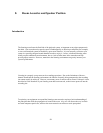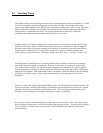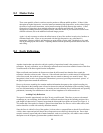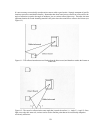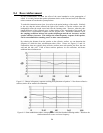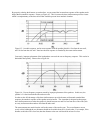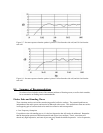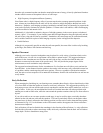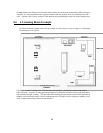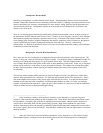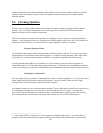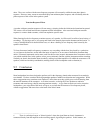27
about the only common item that can absorb a meaningful amount of energy is heavily upholstered furniture.
Another effective means of absorption is the use of sonic traps.
• High Frequency Absorption and Room Symmetry
Since flutter echo is a high-frequency effect, it becomes much easier to manage potential problems in this
area. Almost any item attached to the walls will be less reflective at high frequencies than the bare walls
themselves. Draperies, wall hangings, paintings, bookshelves and other items will normally be present in the
room, and will usually eliminate any possible problems. If flutter echo is still audible, a fabric wall hanging
provides an effective and attractive cure.
Additionally, it is desirable to maintain a degree of left/right symmetry in the room to preserve a balanced
acoustic “space”. For example, if your listening room has full length draperies along the right wall, and the
left wall is bare, slap echo will not be a problem. Nonetheless, the sound-stage may be somewhat distorted,
and it could be beneficial to place a fabric hanging or tapestry on the wall opposite the draperies.
• Parallel Surfaces
Although it is not generally possible to make the walls non-parallel, the same effect is achieved by breaking
up the large, flat surfaces with furniture and shelving.
Speaker Placement
Although your Avalon Acoustics loudspeakers may be placed in a wide variety of positions relative to the
walls of the room, it is still wise to experiment a bit to achieve optimal results. The suggested minimum
distances for the Ascendant are two feet from one wall (side or rear), and four feet from the other (all
distances are measured to the center of the woofer cone). This will provide the proper degree of bass
reinforcement, as well as minimize early reflections.
The suggested maximum distances for the Ascendant are five feet from one wall (side or rear), and ten feet
from the other. As the distance from the speaker to the nearby walls increases, early reflections become less
of a problem, and the sound-stage becomes more spacious. However, regardless of the absolute numbers
used, the most even bass response will be attained if the distances from the side wall and the rear wall are not
overly similar.
Early Reflections
When arranging the furnishings in your listening room, remember that reflective objects should not be within
a five foot radius of either the speaker or listener to avoid early reflections. This suggests the possibility of a
dual-purpose room, with one end devoted to music reproduction, and the other end for another use, such as a
study or office. In this way, the area behind the listener will contain items that will reduce problems with
standing waves and/or flutter echo, while the zone around the speakers remains relatively free from reflective
objects.
If you wish to achieve an even more spacious sound-stage, it may be useful to place a sonically absorbent
material on the side and rear walls near the speakers. This can be particularly effective at the points where
the sound wave is directly reflected to the listening position (a mirror can be used to determine these points,
as illustrated in Fig. 8.2). As the distance to the wall becomes smaller, the suppression of these reflections
becomes more important.
Early reflections will tend to diminish the soundstage in the direction of the reflections, i.e. early reflections
from the side walls tend to reduce sound-stage width, while early reflections from the back wall will reduce
image depth. We have found that a strong sense



